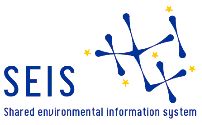Useful links
On this page you can find links to some interesting and useful sources of data and GIS related information.
Environmental monitoring
The datacentre of the International Council for the Exploration of the Seas (ICES) hosts a wide range of downloadable data from e.g. the Baltic Sea, related to the marine environment. |
|
|
 SeaDataNet has a distributed Marine Data Management Infrastructure for the management of large and diverse sets of data deriving from in situ and remote observation of the seas and oceans. Professional data centres, active in data collection, make up a Pan-European network providing on-line integrated databases of standardized quality. |
MarCoast (Marine & Coastal Environmental Information Services) delivers satellite-based services in the field of marine and coastal applications. Services integrate detection and monitoring technologies involved in water quality, oil spill and metereological information into a durable network. |
|
Ecological modelling
The Baltic Nest model provides data and information on the loading of nutrients from land and air, and its relation to human activities. The system covers the entire Baltic drainage basin and the entire Baltic Sea, and links measures on land with effects to the sea. |
The Waterforecast system by DHI Water and Environment is an example of a 3D hydrodynamic model and a 3D bio-chemical model used for describing the physical and bio-chemical conditions of the Baltic Sea including the Danish Straits. Click here for more information about the system. The model results demonstrate surface salinity, surface temperature and surface current. Furthermore, bottom concentration of oxygen is included. | |
Pollution
|
| The IAEA's Marine Information System is a relational database, based on GIS (Geographical Information System), covering the distribution of radioactive and stable isotopes, and in the near future also other tracers (organic compounds, trace metals) in the marine environment. |
Biodiversity and nature protection
The Baltic Sea Alien Species Database provides a qualified reference system on alien species for the Baltic Sea area. |
|
The Global Biodiversity Information Facility (GBIF) is an international organisation that is working to make the world's biodiversity data accessible anywhere in the world |
Shipping
MarineTraffic.com provides free real-time information to the public, about ship movements and ports, mainly across the coast-lines of Europe and N.America. The project is currently hosted by the Department of Product and Systems Design Enginnering, University of the Aegean, Greece. The initial data collection is based on the Automatic Identification System (AIS). |
The SafeSeaNet system has been developed for supporting the requirements of the Directive 2002/59/EC of the European Parliament and of the Council of 27 June 2002 establishing a Community vessel traffic monitoring and information system and repealing Council Directive 93/75/EEC. The system is accessible to the National administration of the Member States of the European Community and of the European Free Trade Association States. |
Other Baltic specific data services
| The Baltic Sea Region GIS, Maps and Statistical Database is a result of the Baltic Drainage Basin Project (BDBP), a multi-disciplinary research project under the EU 1991-1994 Environment Research Programme. It was developed as joint effort between the Beijer Institute, Stockholm, Department of Systems Ecology, Stockholm University and UNEP/GRID-Arendal. |
European data
The Institute for Environment and Sustainability (of the EC-Joint Research Centre) hosts a large number of unique scientific databases. Click here for a summary and access to these databases. |
The European Environment Agency (EEA) is an agency of the European Union which provides sound and independent information on the environment. From the EEA website, you can view and download a wide range of publications, data, graphs and maps. The Water Information System for Europe (WISE) is hosted by EEA. |
The European environment information and observation network (Eionet) aims to provide timely and quality-assured data, information and expertise for assessing the state of the environment in Europe and the pressures acting upon it. Links to guidelines, templates, services for use in EEA - Eionet when handling geographic information systems, maps and geographic spatial data can be found here. |
The Infrastructure for Spatial Information in the European Community (INSPIRE) aims to deliver integrated spatial information services, which should allow users to identify and access spatial or geographical information from a wide range of sources, from the local level to the global level, in an inter-operable way for a variety of uses. Click here to access the INSPIRE Geoportal. | The Shared Environmental Information System (SEIS) is a collaborative initiative of the European Commission and the EEA to establish together with the Member States an integrated and shared EU-wide environmental information system. |
Global Monitoring for Environment and Security (GMES) will be the European programme implementing an Earth observation service system with satellites, sensors on the ground, floating in the water or flying through the air to monitor our planet's environment and to support the security of every citizen. |
Other
FAOSTAT provides time-series and cross sectional data relating to food and agriculture for some 200 countries. | The UNECE Statistical Database contains a wide range of (mainly socio-economic) data covering Europe, North America and Central Asia which can be downloaded for free. |
GeoNetwork gives easy access to geographically referenced thematic information between different organizations. It's aims are to improve access to and integrated use of spatial data and information, support decision making, promote multidisciplinary approaches to sustainable development and enhance understanding of the benefits of geographic information. |
The Global Livestock Production and Health Atlas (GLiPHA) is an interactive electronic atlas that provides a scaleable overview of spatial and temporal variation in quantitative information related to animal production and health. |
Last updated 3 August 2009.





















